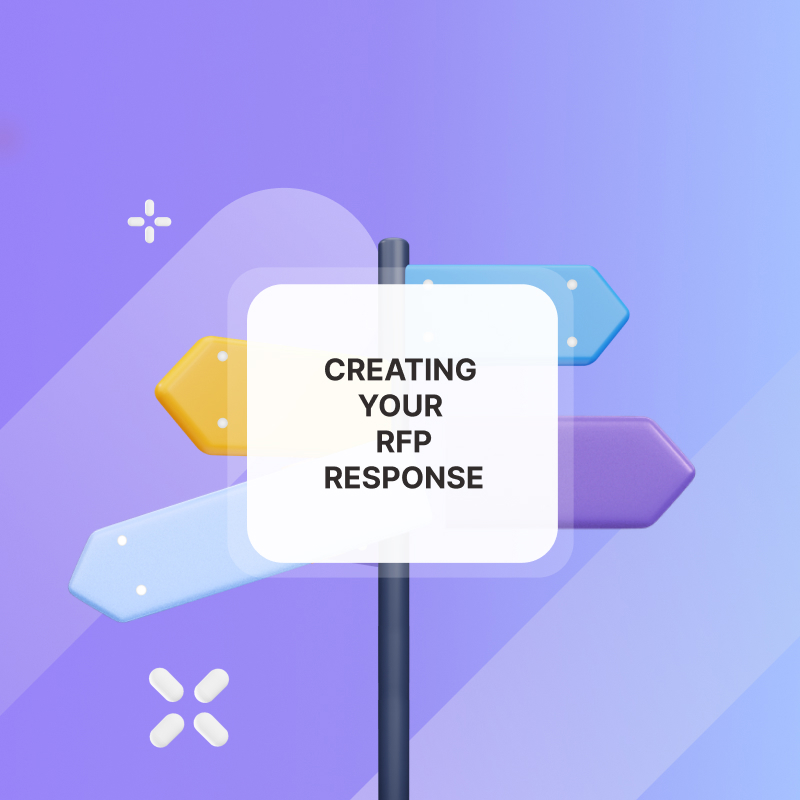
Buyers are bombarded with countless options.
As a sales professional, if the only thing you do is pitch rather than focus on a consultative approach, you will have a tough time selling to the modern buyer.
By the end of this blog, you will learn about value-based selling and practical ways to integrate it into your sales process.
What is Value-Based Selling?
This is a sales strategy that focuses on the impact of your product on your customers rather than focusing on the product itself. It takes on a more consultative approach rather than a right-out sales pitch.
Here's a breakdown of the key aspects of value-based selling
- It prioritises understanding the customer's perspective and business goals.
- It focuses on identifying and addressing the customer's pain points and challenges.
- It clearly highlights your solution's benefits and outcomes, translating features into tangible value.
- It emphasizes quantifiable results the customer can expect.
Types of Value-Based Selling
- Value-based sales focused on saving money
- Value-based sales focused on earning more money
- Value-based sales focused on risk aversion
- Value-based sales focused on gaining efficiency
Value selling focused on saving money
Every company wants to save money. If you can clearly demonstrate how they can save more money from your product then there are higher chances of closing the deal.
For example, at Hubforce we showcase how our clients can save 30% of sales cost.
We also showcase how our clients can deliver more personalised support for their customers without the need to scale their customer success team. This translates into saving more money that would have been used to hire salespeople or CS personnel.
Value selling focused on earning more money
People spend money on something that would give them more money. Your customers are the same. With this type of value selling, you focus on demonstrating how your product can yield more income.
You can showcase this with relevant case studies from previous clients.
Value selling focused on risk reduction
Leaders juggle evolving market trends and emerging competition, while striving for sustainable growth.
You should offer support and training, ensuring your client has the resources they need to navigate challenges and optimise their investment.
Note: Don't simply promise to "eliminate" risk, which is unrealistic. Instead, showcase how your solution reduces the prospect's chances of challenges. Provide a roadmap for navigating potential obstacles.
Value selling focused on gaining efficiency
Time is money. Wasted time and resources translate to lost opportunities. This is where efficiency-based value selling becomes a powerful tool in your sales process.
By focusing on efficiency, you can demonstrate how your product or service can:
Automate tedious tasks, freeing up valuable time for your prospects and their team.
Streamline processes, eliminating unnecessary steps and bottlenecks.
Improve communication and collaboration, leading to increased productivity.
Optimise resource allocation, ensuring your prospect gets the most out of their existing resources.
Benefits of Value Selling
- Shorter sales cycle: When you demonstrate the ROI of your product, it becomes easier for prospects to make a decision
- Pipeline stability: Value-based sales increase win rates allowing you to gain more predictability in your pipeline
- Competitive advantage: If you can show genuine care and demonstrate the value you are providing your prospects with proof, you will have a competitive advantage over others claiming to be the best.
- Increase Customer Lifetime Value: Value-based selling helps build trust, making it easier to upsell or cross-sell customers. This helps to increase the customer's lifetime value.
Practical Steps for Implementing Value-Based Selling
1. Research prospects and learn what resonates with them:
This is often a continuous process because buyer personas and behaviours always evolve.
After research, how do you track if your content resonates with prospects or not?
You can simply centre all sales materials in a digital sales room and track prospects' engagement in real time
With Hubforce, you can get real-time analytics into what resonates with customers like;
- Content they are viewing
- Content they are sharing
- How much time they are spending on each content
This will inform you on what resonates and what you should improve on
2. Highlight Your Unique Value Proposition
If your competitors have the same pricing or features, highlighting your unique value to your prospects will set you apart from the competition.
For example, you may offer a product that helps companies save money. Your competitors may be offering the same features with similar pricing
So how do you stand out?
While price may be a common factor, exceptional customer service can be a game-changer. You can showcase your dedicated support team, extensive knowledge base, and proactive approach to customer success.
You can explain how you'll go the extra mile to ensure their success and address any concerns promptly, saving them time and frustration in the long run.
3. Give Value to Every Interaction
By adopting the approach of a trusted advisor rather than a salesperson, you can provide value to your prospects at any point. Fresh information at every meeting or interaction will keep buyers engaged and demonstrate that you are genuinely invested in solving their problems.
However, buyers prefer fewer meetings with sales reps. They want to discover and explore your value proposition through a self-reflective learning path. So in a situation where you have very little contact/meeting with prospects, you can ensure that you provide value at any point of the buying journey using digital sales rooms.
You can track what prospects are interested in and provide more support
For example, if your economic buyer spends time on your proposal page. It might be time to reach out with an ROI calculator.
Bringing value to every interaction gives prospects reasons to keep in touch.
4. Qualify prospects
No matter how hard you try, you can't sell value to the wrong prospect. To maximise resources and ensure that you are selling to the right customer, you must adopt strong qualification processes using either the Sandler or MEDDIC sales methods.
5. Design a personalised buying experience
You may be wondering how to design the buying process. This is why strong discovery and qualification are important. It helps you to understand prospects' needs. This enables you to structure a personalised buying experience with buyer enablement.
Hubforce provides personalised digital sales rooms that can be easily customised for your prospects. It is like providing a private collaborative room where you can offer them white-glove treatments and provide solutions to specific needs during the buying journey based on analytics.
6. Let Conversations Be Natural
Being a salesperson does not mean you should constantly talk to your prospects or pitch slap at any chance you get. Listen actively and make conversations feel natural. This doesn't mean disregarding your sales goals, but rather approaching them through genuine connection and active listening. When you actively, ask questions and engage in genuine dialogue, you build trust and rapport. This creates a welcoming atmosphere where your prospect feels heard and valued
7. Tailor your pricing to their specific needs.
Don't overwhelm prospects with pricing from features that are not relevant to their use case. At the same time, provide as much information and context on the pricing you have provided to avoid back and forths that cause deal delays.
You can easily structure your pricing and include relevant information easily with Hubforce pricing templates. This pricing template is also integrated with your digital sales room to ensure that all sales materials are centralised.
8. Give either free or paid trials
Grant trials for prospects to see how your product applies to their specific situation. Pinpoint the prospective ROI they can get at every phase of their trial.
Value Selling with Hubforce
Hubforce enhances value-based selling by helping you create hyper-personalised buying experiences at scale. You can create a digital sales room/hub for each prospect in seconds and automatically structure sales content to align with their priorities.
You can also:
- Track prospect engagement and provide value at any time without constant meetings
- Create personalised and detailed price quotes centred around your value proposition
- Centralise all valuable materials and guides for prospects
Enhance your value-based sales with Hubforce, your first 5 hubs are free.
















